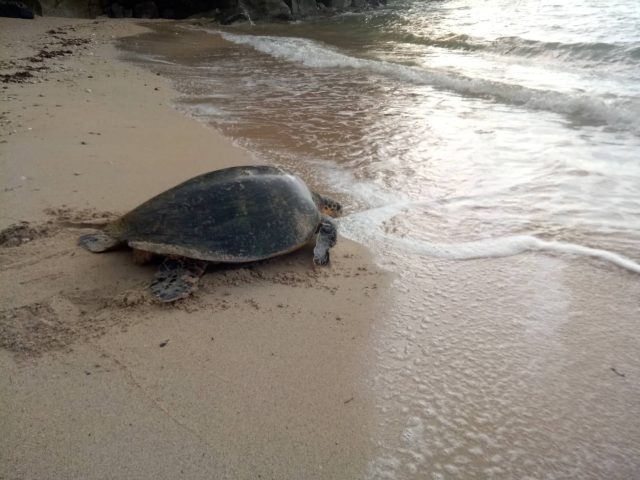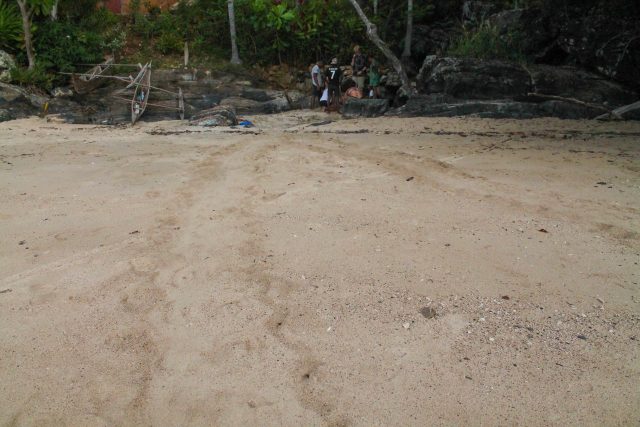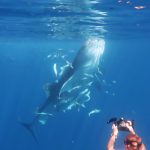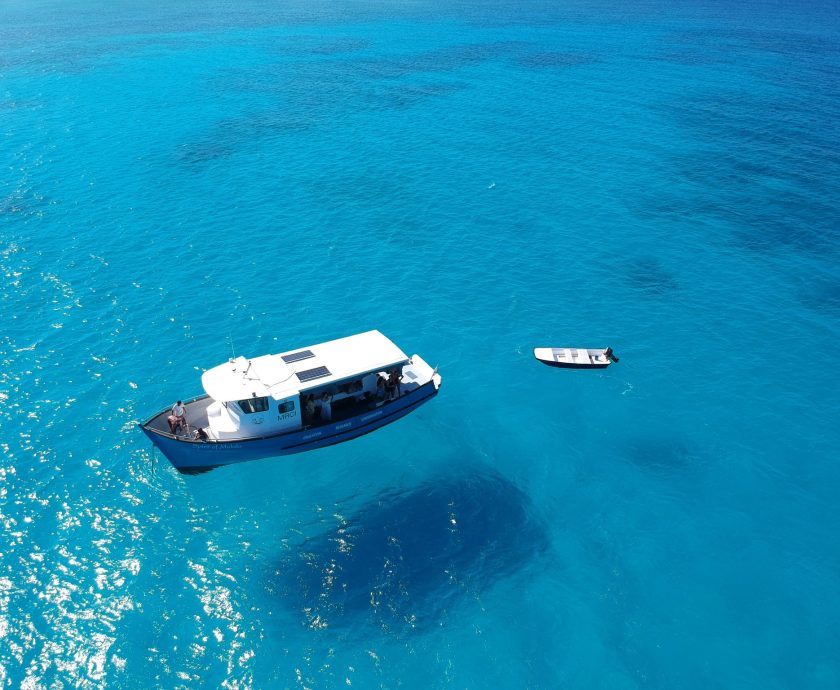
This past week we had an exciting encounter on our home beach when a female green sea turtle came ashore! It is very common to see sea turtles swimming on our reef, however it is far from common for one to come ashore our beach. Our home beach is a small cozy little out cove of sand, perfect for sunbathing but not ideal for turtle nests due to the tide. The tide has the ability of covering our entire beach, meaning any nest laid on our beach would more than likely be drowned. Luckily the female turtle only scoped out our beach, but did not end up laying her nest on it.
Our next-door neighbors happened to be on the beach when the female came on land and they were lovely enough to alert us. She did not stay for long however so by the time our staff arrived she had already made her way back to the water. Our neighbors managed to grab a photo of the turtle which our staff was able to identify as a green sea turtle! We were bummed that we missed her but we were more than excited to get the information that a green sea turtle was checking out Nosy Komba as a nesting ground. In the past MRCI staff have been lucky enough to witness hawksbill sea turtles nesting on Nosy Komba but never a green sea turtle.
This encounter was very out of the ordinary for multiple reasons. One major one being that it was in the evening. Turtles are known to come a shore at night to nest, not while it is still light out. This fact led our staff to make the educated guess that she was probably caught off guard and a little desperate to come ashore before dark. Another fact that lead us to that assumption is that females tend to return to the beach they were born on to lay their own nests. As long as MRCI has been operational we have not had a nest on our home beach so it is most likely not where she was born.

Sea turtles are facing major survival issues. Only 1 in 1000 sea turtles make it to adulthood making witnessing a turtle nesting a very special honor. According to traveltomadagascar.com, Illegal poaching is the number one threat to turtles, but there are also other human factors factors such as heavy coastal development. “Rising global temperatures also have a detrimental impact on sea turtles’ food and reproduction. The warmer temperatures and increased acidity of the oceans affect the survival of some of their food sources, such as molluscs.” Another major issue it that the gender of a sea turtle is dependent on the temperature of the sand the eggs are buried in. If global temperatures continue to rise only female sea turtles will be born leaving no males to mate with.
If you are passionate about sea turtle conservation then check out our new
Volunteer Sea Turtle Monitoring Program!
Our sea turtle conservation volunteers live and work at our Turtle Beach Camp where there are known turtle nesting sites. Volunteers help collect data on the population, protect active nests, and help educate the local community about the issues facing the sea turtle population.
Follow us on Facebook and Instagram to keep up with all of our amazing adventures!





